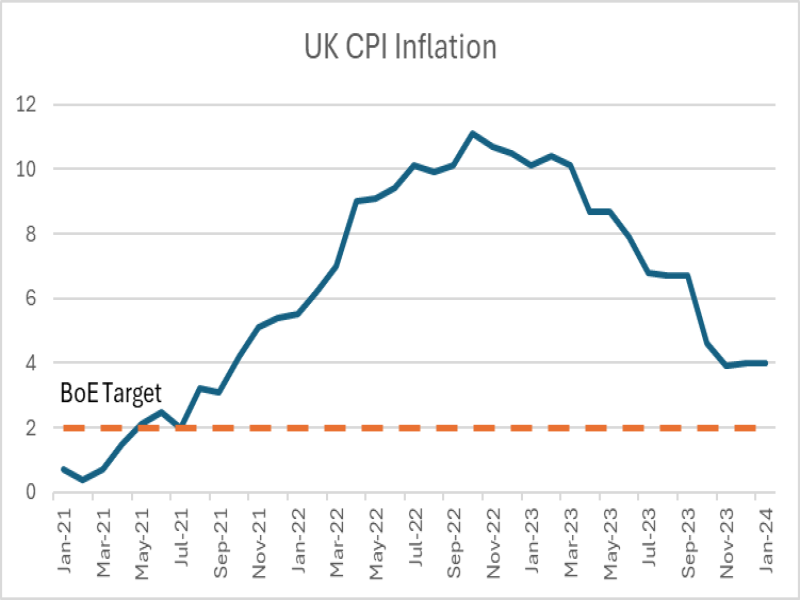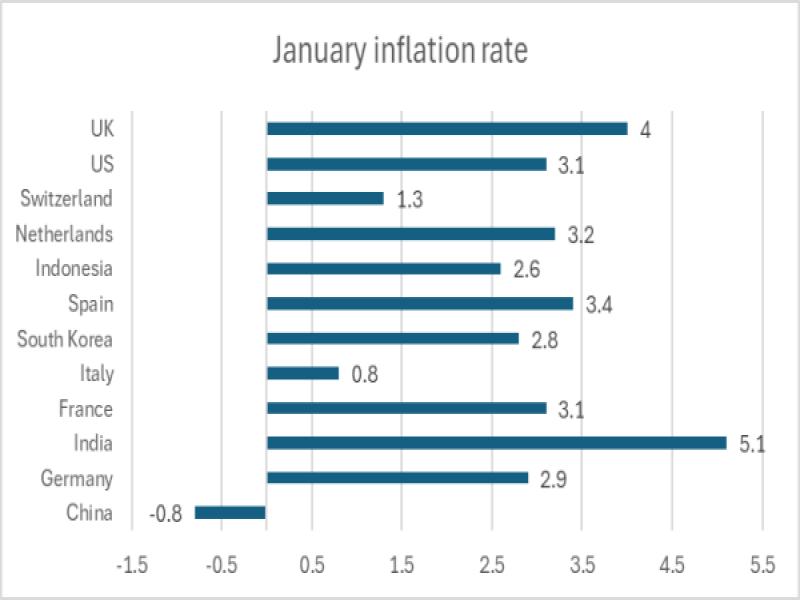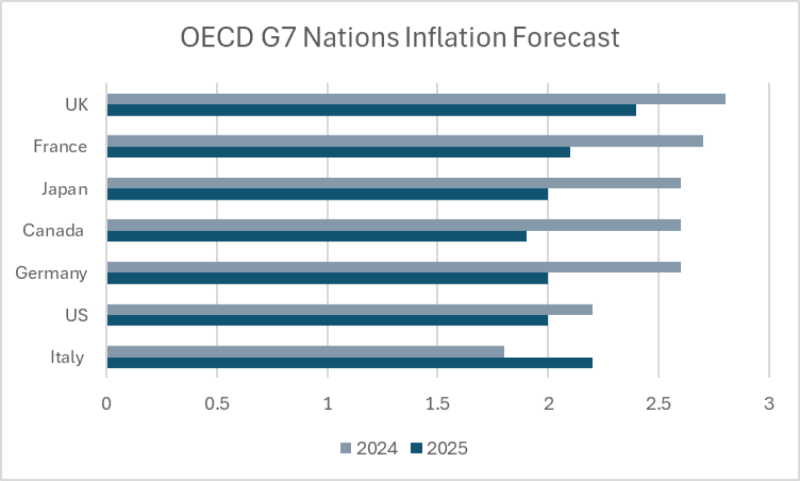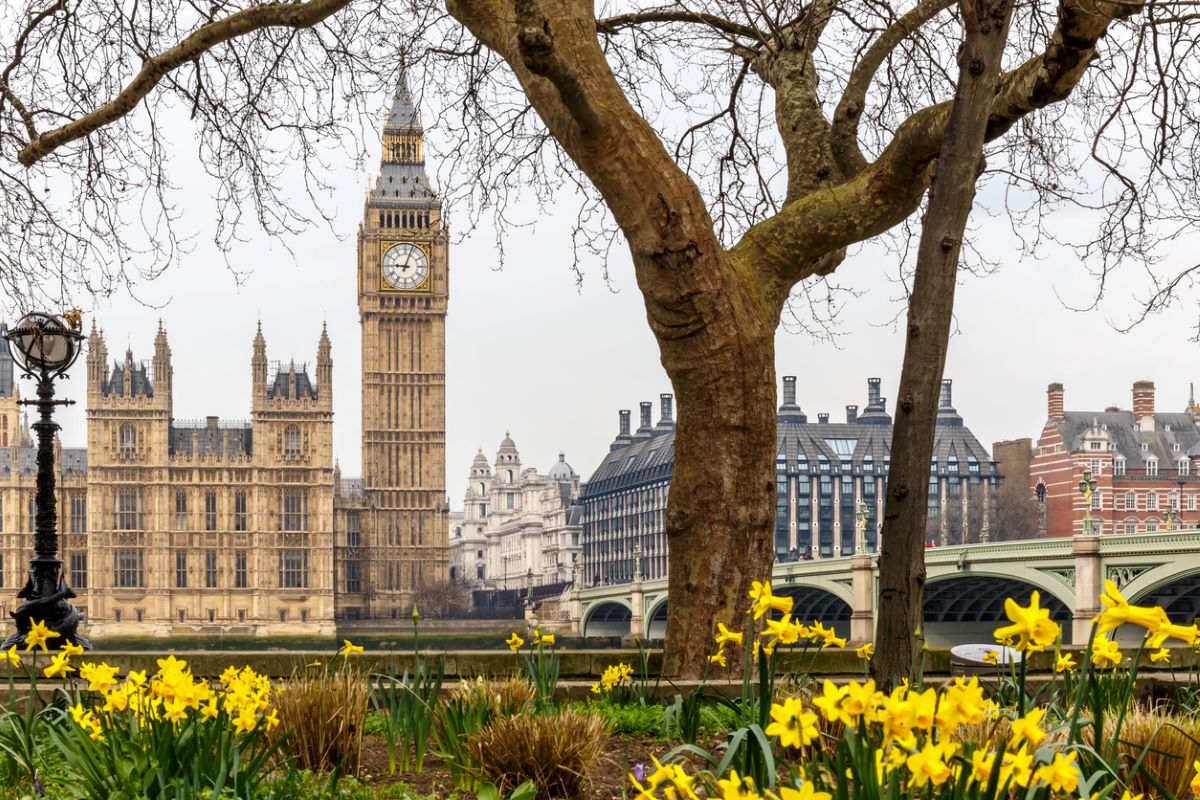Do you have the wrong ISA?
Individual Savings Accounts, or more commonly known as ISAs, are one of the most tax-efficient methods of saving and investing and are available to UK residents only.
Any interest, dividends, or capital gains earned within an ISA are usually exempt from income tax and capital gains tax, which hugely benefits individuals in boosting returns on investments compared to holding them in taxable accounts. This is why it’s wise to understand the importance of ISAs and understand how they form a useful tax-efficient element of your holistic financial plan. But what are the different types of ISAs available to you, and what are the benefits they can offer you in differing stages of the financial planning life cycle. ISAs are inherently useful, but used at the wrong time in your life can make them inefficient in achieving your financial goals. Of course, managing your assets is a highly personalised process, and how much you want to allocate to ISAs should reflect your own individual circumstances.
Arrange your free initial consultation
How much can I invest into an ISA?
The ISA allowance for the current tax year 2024/25 is £20,000, which it has remained at since 2017 when the Government announced plans to freeze this and other allowances until 2026, which was later extended to 2028. You can allocate your entire allowance to one type of ISA or spread it across the different types that we’ll look at shortly. The good news is the new tax year 2024/25 introduced a new rule, where you can open multiple ISAs of the same type with more than one provider in the same tax year, whilst retaining your annual allowance.
The different types of ISAs
Cash ISAs – These are specifically designed for cash savings accounts offered by banks and building societies. Cash ISAs, much like standard taxable savings accounts, come in various forms, including instant access accounts, regular savings accounts, fixed-rate accounts, and variable-rate accounts. This allows individuals to choose the type of account that best suits their savings goals and preferences. And of course, all interest earned, whilst held in an ISA, is tax free.
If you are interested in exploring what cash ISAs have to offer, please check out our Cash ISA page, which displays the best rates currently available.
Stocks & Shares ISA – These offer the opportunity to invest your cash into wide range of investments, from individual stocks to collective investment funds. These are well-suited for long-term investing, as they offer the potential for higher returns compared to cash savings. However, as the returns are linked to the performance of the investments, the value of the investment could fall as well as rise.
Lifetime ISA (LISA) – These are designed to help young people save for their first home or retirement and can either be held as cash or investments. To be eligible, you must be aged between 18 and 40 and can contribute a maximum of £4,000 per tax year. To incentivise savers, the Government contributes an additional 25% bonus on your contributions up to a maximum of £1,000 per tax year.
The cut-off date for contributions into this type of ISA is 50 years old, however, your account can stay open, and your cash savings or investments can continue to grow. If you opt to not use your funds to purchase your first home, the earliest you can access the money is at age 60.
Junior ISA (JISA) – These offer a long-term saving and or investment opportunity for children under 18. They can also be in the form of cash or stocks and shares ISAs. The annual allowance is £9,000 per tax year, and the money cannot be accessed until the child turns 18. Parents or guardians can open a Junior ISA, but the child can take control at age 16 and withdraw money at age 18.
Innovative Finance ISA – This ISA contains peer-to-peer loans instead of cash or stocks and shares ISAs. Peer-to-peer lending matches lenders up with borrowers in return for interest. As banks are not used and money is invested through an online portal, you can potentially earn higher interest rates than a traditional savings account. Please be aware that these are slightly more complex ISA wrappers and are not protected by the Financial Services Compensation Scheme, so the risk of losing money is higher.
A new 'British ISA' was announced in the Spring Budget and is still under consultation. What we know at this point however, it should offer an additional £5,000 tax-free ISA allowance for investments into British companies, and should be in addition to the standard £20,000 ISA allowance which has remained unchanged.
Further details to follow including when this will be available.
Which ISA is right for you?
How to select the best ISA for you will be determined by your individual savings goals, attitude to risk and time horizons to grow your pot. The following scenarios attempt to demonstrate which ISAs might be suitable for individuals at different stages in their life cycle.
For a young individual with a keen interest in building a large asset base to supplement pension income for retirement, a stocks and shares ISA could be a good option, and with a long-time horizon, short-term volatility is less likely to be an issue. This approach could see better returns over the long-term when compared to cash returns over the same time horizon.
However, those with their eye on retirement in the near future, will most likely want to take a lower risk approach than a stocks and shares ISA. Here, a cash ISA might be a more suitable option to minimise exposure to market volatility and any short-term losses.
Having multiple ISAs working in cohesion with one another may be an optimal solution for a number of individuals. A young family for example, might want to set up a junior ISA for their children to help save for their future. Alongside this, they may want to subscribe to a lifetime ISA if they are looking to purchase their first property. Care should be taken when assessing the suitability of a lifetime ISA;. although the 25% government bonus is appealing, if you decided to not use the funds for your first house purchase, there is restrictive access until age 60, as well as limits on the value of the property that the ISA can be used for.
Do I have the wrong ISA?
It’s important to ask yourself this question and think to yourself, do I have the right ISA for me? You will need to assess your own personal short- and long-term goals; whether you want to save for the future or set aside some money to use in the short term, in a tax- efficient environment. Some rules can be restrictive and falling foul of the rules could cost you.
Having the wrong type of ISA for your objectives can make them ineffective. Although they appear to be simple wrappers, it is recommended to seek advice from professionals who have the expertise in this area, to help guide you through your overall financial plan.
If you’d like to learn more about how ISA can work within your financial plan, why not get in touch. We’re currently offering those with £100,000 or more savings, investment or pensions a free financial review worth £500.
Arrange your free initial consultation
This article is intended for general information only, it does not constitute individual advice and should not be used to inform financial decisions.
Investment returns are not guaranteed, and you may get back less than you originally invested. The Financial Conduct Authority (FCA) does not regulate cash or tax advice.

Static base rate and falling inflation provides good news for savers
There have been two key announcements last week. The Bank of England held the latest Monetary Policy Committee (MPC) meeting and voted to keep the base rate at 5.25%, as was widely anticipated.
The day before, the Consumer Prices Index (CPI) measure of inflation was announced - 3.4% in the 12 months to February, down from 4% in January. This was lower than expected, and at its lowest level since September 2021 when it was 3.1%. Of course, as we have to keep reminding ourselves, this doesn’t mean that prices are falling, it simply means that the cost of things are rising a little more slowly. Certainly a lot slower than in October 2022, when CPI inflation hit 11.1% - the highest level in 41 years.
Arrange your free initial consultation
That said, depending on your lifestyle, there may actually be some items that are in your inflation basket that have fallen in price. For example, although the rising cost of bread has slowed from 2.1% in January to 1% in February, which means the price is still rising a little, the price of butter and jam has been falling! And with the price of milk falling too, it looks like breakfast is a pretty inflation busting meal right now!
The main downward drivers of CPI have been an ongoing slowdown in the rising cost of food and restaurants & cafes – the latter helped by a slowdown in the prices of some alcoholic drinks such as gin and whiskey.
Motorists are also seeing cheaper prices at the pumps, as the average price of petrol rose by 2.3p per litre between January and February 2024 to stand at 142.2p per litre, but down from 148p per litre in February 2023.
Diesel prices rose by 3p in February to stand at 151.3p, but down from 169.5p in February last year.
The ONS stated: “These movements resulted in overall motor fuel prices falling by 6.5% in the year to February 2024, compared with a fall of 9.2% in the year to January”.
Core inflation, which excludes the more volatile energy, food, alcohol and tobacco, rose by 4.5% in the 12 months to February 2024. But this is down from 5.1% in January.
Of course, lower inflation means that once more there is greater expectation for the base rate to be cut and traders are now pricing in a 63% probability of a 0.25% rate cut in June. However, the Bank of England has indicated that it cannot start cutting rates yet, given stubbornly sticky growth in services' prices and wages, warning of the possibility of inflation remaining higher for longer.
What should savers do?
The good news is that whilst it feels like savings rates may have peaked recently, the top rates available have been pretty stable. So, this combination of stable savings rates with a drop in inflation means that there are many accounts available that are paying an interest rate that is higher than the current level of inflation, even if you now pay tax on your savings interest.
The top easy access account is paying a gross rate of 5.10% at the moment. After the deduction of 20% tax, the rate falls to 4.08%, but that rate still beats the CPI level of inflation which has fallen to 3.4%. Of course, that rate is variable, so could well start to drop once the base rate does, so if you can afford to tie some cash up, now could be a good time.
The top 1-year bond is paying 5.26% - which is 4.21% after 20% tax. And although longer term bonds are paying less, this is a clear indication that the market expects rates to start to fall soon, so locking in now for longer at a lower rate could see you earning more in the long run – and if inflation continues to fall, you could hedge against inflation for the duration. The top 5-year bond is paying 4.55%, which is 3.64% after 20% tax – still higher than CPI.
And, don’t forget that there is a £20,000 ISA allowance, which can shelter your savings from the taxman. The top easy access ISA account is paying 5.15% tax free/AER with app-only and new provider, plum, whilst the top paying 1-year cash ISA is paying 5.09% with Castle Trust. There is also the Virgin Money 1 Year Fixed Rate Cash ISA Exclusive Issue 11 which is paying 5.25% but you need to hold or open a current account with Virgin to be eligible – although you don’t need to switch current account or set up any direct debits. The top 5-year ISA is with UBL paying 4.16% tax-free.
Of course there are still a number of accounts that are paying less than inflation. Whilst closed to new business, the Virgin Money Access Saver account is still paying just 0.25%. And Barclays live Everyday Saver account is paying between 1.16% to 1.66% AER – the latter applying to the first £10,000 deposited only.
If you have £10,000 in an account earning 0.25%, with inflation at the current level of 3.4%, after one year, although the total balance including accrued interest would be £10,025, the real value after the effect of inflation would have reduced your spending power to £9,695. However, if you picked the top paying easy access ISA paying 5.15% tax free/AER, not only would the total balance have increased to £10,515 after a year, but more importantly the real value would have grown too – giving you spending power of £10,169, so more than keeping up with inflation.
This illustrates just how important it is to pick the top paying accounts. So keep a close eye on best buy tables.
Take a look at our inflation calculator below, to see how your savings accounts are faring against inflation.
Arrange your free initial consultation
This article is intended for general information only, it does not constitute individual advice and should not be used to inform financial decisions.
The Financial Conduct Authority (FCA) does not regulate tax advice.
The accounts and rates mentioned in this article are accurate and correct as the time of writing 22/03/2024.

NS&I announces new British Savings Bond
Firstly, the Chancellor announced that a new British Savings Bond will be delivered through NS&I, (National Savings & Investments) which will be launched in April this year.
What this actually means is that NS&I will be re-issuing its 3-year Guaranteed Income and Guaranteed Growth Bonds offering savers a chance to deposit between £500 and £1million, whilst keeping the lot protected, as all deposits made with NS&I are guaranteed by the Treasury.
Arrange your free initial consultation
The biggest news was from NS&I
The rate has not yet been released but NS&I has already announced that it will be ‘priced mid-market’ so it’s unlikely to be very exciting.
NS&I’s net financing target for the new tax year has also been announced and it’s been increased from the current level of £7.5 billion, to £9 billion.
This target is the amount that the Treasury-backed savings provider has been tasked with raising for the Government. Whilst an increase would normally be good news for savers, as it would ordinarily indicate that NS&I may need to raise savings rates in order to raise more money, the possible fly in the ointment this time is that the forecasted net amount raised for the current tax year is expected to be £10.9 billion – far above the target of £7.5 billion. So, NS&I is already awash with cash, which could mean more cuts rather than any increases any time soon. We’ll have to wait and see.
Allowances frozen
The Personal Savings Allowance (PSA) has remained the same since it was introduced in April 2016 – giving basic rate taxpayers £1,000 of tax-free interest per year and higher rate taxpayers £500. While this appeared pretty generous when it was launched, as savings rates have increased the PSA is being used up with less and less cash on deposit. In April 2016 the top paying easy access account was paying 1.45%, so you would have needed a deposit of £68,966 to breach the £1,000 PSA (assuming you held no other savings accounts). Today, if you were to open the top easy access account paying 5.11%, a deposit of just £19,570 would earn more than £1,000 in gross interest.
This is why cash ISAs have become so important once again – savers can earn tax free interest, regardless of the amount.
Which is why it’s so disappointing that the cash ISA allowance has also remained frozen. The Chancellor announced a new British ISA allowance – so an extra £5,000 can be sheltered from tax, but this is only for those happy to put money into British investments – it’s not an extra allowance for cash savers.
The Junior ISA allowance will also remain at £9,000 and there will be no increase to the Lifetime ISA limit, which is £4,000. Added to that, it’s disappointing that the 25% penalty charge for a withdrawal before the age of 60 for anything other than buying your first home has not been reduced, as was widely expected. And there has been no change to the upper value of the property that can be purchased – it will remain at £450,000.
The 'starting rate' for savings has been frozen again too at £5,000. This allows those earning less than £17,570 from employment or pension, to earn up to £5,000 in savings interest before paying any tax on it. This is in addition to the Personal Savings Allowance.
According to the Budget documents, the freeze in just the starting rate for savings should earn the Treasury £95m by 2029!
While it’s disappointing that Jeremy Hunt has failed to help savers to keep more of the interest they are earning on their savings, this doesn’t mean that you can’t put more pounds in your pockets. There is still good competition in the savings market, so keep an eye on our best buy tables to make sure you are earning as much interest as possible.
Arrange your free initial consultation
This article is intended for general information only, it does not constitute individual advice and should not be used to inform financial decisions.
The Financial Conduct Authority (FCA) does not regulate tax advice.

UK inflation and how it compares to the rest of the world
Crumpets or Croissants – what’s in your inflation basket?
The Chancellor, Jeremy Hunt, stated in his recent Budget speech that inflation is expected to fall below the 2% target in just a few months' time, according to figures from the Office for Budget Responsibility (OBR). Whilst politicians are patting themselves on the back for their perceived part in bringing costs down, I’m sure many people are still well aware we continue to live in a cost of living crisis and while inflation is coming down, this simply means that prices are rising at a slower rate, but they are still rising. The speed at which prices have risen on everyday items is hard to comprehend, but it’s not just the UK that is feeling the pain.
But what is really affecting inflation and how is it measured? How does the UK measure up against other economies, how does our basket of goods compare, and most importantly what does this all mean for you and your financial future.
Arrange your free initial consultation
What is inflation?
The release of January’s CPI inflation figures by the Office for National Statistics (ONS) showed that inflation in the UK held steady at 4%, the same rate as in December but below the Bank of England (BoE) and analysts' predictions.

Figure 1 - UK CPI Inflation from January 2021 – January 2024, Source: Office for National Statistics
This marked the 30th consecutive month of inflation being above the 2% target set by the Bank of England, dating back to August 2021. The good news here is that inflation has been steadily falling from the 11.1% high in October 2022, despite the 0.1% rise in December from 3.9% to 4%.
With rising inflation set to continue to impact our lives, it’s worth reminding ourselves about what inflation means and how it is measured. After the last few years, we are all aware of the fact that inflation is the periodic rise in the price of goods and services. But how is this measured to allow the Office for National Statistics (ONS) to come up with a figure each month?
Measuring inflation in the UK
Inflation is measured using price indexes: these do vary in the way they measure prices and what they include but the basics always stay the same. These indexes take a defined basket of goods and services and tracks the changes in the price of each item. Each item's price change is then weighted in relation to the share of total household consumption, to create an average figure that is representative of consumer spending within the economy.
The UK uses three main price indexes, the Retail Price Index (RPI), the Consumer Price Index (CPI) and the Consumer Price Index plus owner-occupiers’ housing costs (CPIH). The main focus is on CPI, a monthly figure calculated by the ONS. This figure does not just hold importance as a way of showing how prices in the UK are changing but is also a measure used by the Government, which links its spending on areas such as state benefits to the figure.
The basket of goods
The basket of goods and services used to measure CPI is made up of over 700 products and is reviewed annually to ensure the measure remains representative of consumer spending. The recent review on March 11 2024, the ONS added 16 items including air fryers, vinyl music, gluten free bread, and edible sunflower seeds. While hand hygiene gel, hot rotisserie cooked chicken, and bakeware were among the 15 items that were removed. With the next review not due until March next year, it will be interesting to see how consumer spending over the next twelve months will affect what items are added and what items are taken away.
Now we have the basket of goods and services, it is the job of local price collectors to visit around 20,000 shops across the country, collecting pricing information. This is done to ensure regional price variations are included in the measure. They visit the same shops and collect information on identical products each month, while the information for larger chain stores is collected using central pricing policies.
The last step in the creation of the CPI figure is to compare the changes in price for each item in the basket, to those collected twelve months ago, to see how the price has changed over the previous year. Each price change is then weighted, taking into account the amount of household spending on the product before being added together to create the final inflation figure for the month.
How is inflation measured around the world?
Inflation is measured in slightly different ways around the world. Price indexes (such as the CPI) are used by different nations. However, the composition, weighting and size of the basket of goods and services varies from country to country to ensure it is representative of the economy which it is measuring inflation for. This provides an insight into how different countries and cultures spend their earnings.
In the UK for example, the basket of goods and services includes Yorkshire puddings, crumpets and fake tan. Items which I am sure may be less popular in France who include fresh scallops, vintage Champagne and butter croissants in their basket of goods and services. The basket used in Italy has over 1,700 items and differentiates between what it defines as “table” and “quality” wine in its calculation.
The United States record the change in price of around 80,000 products each month in their basket of goods, giving them space to include items such as cookies and fresh cupcakes in their inflation measure as well as canned ham.
Finally in New Zealand, the basket also consists of around 700 items taking into account their outdoor lifestyle by including surfboards, fishing rods and women’s jandals, a local term for what we would call flip flops.
How does the UK inflation compare to the rest of the world
Around the world, inflation is continuing to sit above the targets set by many nations' central banks. Figure 2, below, shows the January inflation figures for G20 countries which were released at the time of writing, taking out the anomaly of Turkey and Argentina who reported inflation of 64.9% and 254.2% in January. It may be of some comfort to know that most major economies across the world are sitting in the same camp as the UK. That is with the exception of China who are currently facing deflation, a decline in the prices levels of goods and services, due to a slowdown in their economy.

Figure 2 - Euro Area Inflation Rate - January inflation rate 2024, Source: Trading Economics
However, below shows the inflation forecast by the OECD for G7 nations in 2024 and 2025. They are predicting that the UK is set to have the highest inflation out of the G7 nations in both 2024 and 2025. This contradicts the OBR’s expectations, and highlights that the UK could face higher prices for slightly longer than other global economies.

Figure 3 - OECD forecast for inflation level in 2024 and 2025 of the G7 nations, Source: OECD
What this means for your finances and future seems clear at this point, prices will continue to increase, albeit at a slower pace. If we’re to believe the OBR then we may be in for less pain in the coming months. If we’re to believe the OECD then it may take some time to get there, and we may lag behind other G7 nations. If you’d like to discuss how inflation may affect your financial future why not get in touch and speak to one of our experts. We’re offering everyone with £100,000 or more in savings, investments or pensions a free financial review worth £500, so why not get in touch today.
Arrange your free initial consultation
This article is intended for general information only, it does not constitute individual advice and should not be used to inform financial decisions.

How much savings interest is tax free?
Over the last couple of years, savers have been rejoicing as the interest they can earn on their hard-earned cash has soared in many cases.
That said, you may need to shop around in order to make sure you are earning the best rates, but it can really add substantial pounds in your pocket if you do so.
However, this good news also brings some complexities – namely that many people will now need to pay tax on their savings interest, something they may have avoided when interest rates were at much lower levels.
Arrange your free initial consultation
What is the tax-free allowance on savings interest?
There is a tax-free allowance on savings interest that most people will enjoy – namely the Personal Savings Allowance (PSA) but also the cash ISA allowance. And those with other income (so not including the interest on savings) of less than £17,570 a year may also be eligible for the starting rate for savings allowance, which provides up to £5,000 of tax free interest, in addition to the PSA.
How much is the Personal Savings Allowance?
The PSA was introduced in April 2016, and it means that basic and higher rate taxpayers can earn some interest tax-free, before paying tax at their usual rate on the remainder. For basic rate taxpayers, the PSA is £1,000 – so the first £1,000 of interest from all cash savings accounts is tax free – and they’ll pay 20% tax on the remainder. Higher rate taxpayers have an allowance of £500. Additional rate taxpayers do not have a PSA at all. This allowance does not include any interest earned in a cash ISA.
As interest rates have increased, savers have been utilising their PSA with smaller and smaller deposits. For example, in December 2021, before the base rate started to rise from its record low level of 0.10%, the top 1-year bond was paying 1.37% AER, so the basic rate taxpayer’s £1,000 PSA would have been used up with a deposit of £72,993. Today however, with the top 1-year bond paying 5.28% AER at the time of writing, the basic rate PSA would be breached with a deposit of just £18,940. For higher rate taxpayers, just half this amount will breach their PSA which is £500.
As a result, cash ISAs have become far more popular once again.
Cash ISA
The Individual Savings Allowance (ISA) is £20,000 per year – so savers can shelter £20,000 into an ISA each year. There are four main types of adult ISA, stocks and shares ISA, cash ISA, Lifetime ISA and the Innovative Finance ISA – click here to learn more about each type. There is also a child’s ISA – called the Junior ISA or JISA.
In addition to the above, from April 2024 there will be a new British ISA allowance that allow you to invest another £5,000 in British stocks and shares.
But for those who’d rather use their ISA allowance to earn tax free savings interest, the cash ISA is a great option. The interest earned within a cash ISA is always tax-free, regardless of the amount.
Starting rate for savers
This applies to fewer people, but if your ‘other’ income – so salary, or pension income for example – is less than £17,570 a year, you could be eligible for tax free interest of up to £5,000 in addition to your PSA. The more you earn above your Personal Allowance (not to be confused with your PSA) which is currently £12,570, the less the starting rate is; every £1 of other income above your Personal Allowance reduces your starting rate allowance by £1.
It can be pretty complicated, so the best idea is probably to give you an example;
Sarah earns £13,000 in pension income plus she has £6,200 in savings interest. Although her total income is £19,200, because her ‘other’ income is £13,000, she is eligible for at least some of the starting rate for savings.
However, as her pension income is £430 more than the Personal Allowance, her starting rate allowance is reduced by this amount so will be £4,570 (£5,000 minus £430).
So, she has a starting rate allowance of £4,570, plus her PSA of £1,000, as she is a basic rate taxpayer, a total of £5,570. As her savings interest is £6,200, this is still a little more than her allowances, so she should have to pay 20% tax, but only on £630.
Of course, this is for illustrative purposes only, to indicate how these allowances work together. We are not authorised to give tax advice, so you should seek advice from a tax expert.
How much tax will I pay on savings interest?
Although the PSA is being utilised with smaller deposits, because you can also deposit £20,000 into a cash ISA, if you have not used your ISA allowance elsewhere, you can boost the tax-free interest you can earn.
For example, if you are a basic rate taxpayer with £50,000 in cash (and ‘other’ income of more than £17,570 – so you’re not eligible for the starting rate for savers) and you were considering a 1-year fixed rate bond, if you were to deposit this money into a standard taxable account earning the current top rate of 5.28% AER, you would earn £2,640. As you have a PSA of £1,000 you would need to pay 20% tax on £1,640, which is £328. So you would take home £2,312 after tax.
However, if you were to put £20,000 into a top paying cash ISA paying around 5% and the remaining £30,000 into the bond, you will pay less tax and take home more, even though the ISA rate appears lower than the bond.
£20,000 in the ISA at 5% would earn £1,000 tax-free.
£30,000 in the bond at 5.28% would earn £1,584 before tax but you’d need to pay 20% on £584 – which means deducting £116.80.
So, in the second example, you’d earn £2,467.20 after tax – so more than £100 more!
What happens if I exceed my Personal Savings Allowance?
When the PSA was introduced, the biggest change to our savings was the way that interest was paid. Before the PSA, interest was paid after the deduction of basic rate tax, unless you were a non-taxpayer and completed an HMRC form to confirm this. However, from April 2016 this changed and all interest is now paid without any tax deducted.
For the majority of those who are part of the PAYE scheme – so anyone with employed income or pension income – HMRC will take an estimate of tax due and amend your tax code accordingly. But, this will be based on old information supplied by the banks and building societies – the actual interest you earn over the coming year may be very different, especially if you have added or removed large amounts of cash since the last tax year.
So, it’s important to review your tax code letter which shows the interest HMRC has assumed you will earn and inform HMRC if things don’t look right.
If you already do a self-assessment tax return, you can pay any tax due via that process.
How can we help?
Whilst earning interest on your savings should be simple, there are clearly a number of things to consider – but ultimately it makes sense to earn as much as you can and the recent increases in interest rates means that there is a great opportunity to earn some meaningful interest on your cash savings once again.
If you want to find out how you can earn more on your hard-earned cash, why not get in touch. We’re offering everyone with £100,000 or more in savings, investments or pensions a free financial review worth up to £500.
Arrange your free initial consultation
This article is intended for general information only, it does not constitute individual advice and should not be used to inform financial decisions.
The Financial Conduct Authority (FCA) does not regulate tax advice.

Spring Budget 2024
The Spring Budget 2024 confirmed some rumours, such as the introduction of a British ISA, and at the same time, contained a few surprises too.
The main points are summarised below along with a reminder of some of the other changes coming into effect in April 2024.
Some measures are potentially subject to change until enacted into legislation.
If you have any questions or would like to speak to one of our expert financial advisers about the changes announced, contact us to arrange a free initial consultation.
Arrange your free initial consultation
Pensions
Abolition of Lifetime Allowance (LTA) from 6 April 2024
A further Pension Schemes Newsletter / Lifetime Allowance Guidance Newsletter is expected this week but no further detail was issued as part of the Budget itself. Further information will be issued once it’s available.
State pension
Triple lock means new state pension and basic state pension will increase by 8.5% in April 2024. Full new state pension figure will be £221.20 per week.
Investments
Individual Savings Accounts (ISA)
The annual subscription limits all remain at their current levels in 2024/25, i.e.
- £20,000 ISA
- £4,000 Lifetime ISA
- £9,000 Junior ISA (and Child Trust Fund)
A new British ISA is to be introduced from a date to be confirmed. This will give investors an additional £5,000 ISA allowance each tax year, so on top of the current £20,000. There is a consultation paper in place to obtain feedback from ISA managers, but the idea is for allowable investments to include UK equites and potentially UK corporate bonds, gilts, collectives.
As previously announced at the Autumn Statement, the government is to make changes to ISAs to simplify the scheme and widen the scope of investments that can be included in ISAs. To simplify the scheme the government will:
- Allow multiple subscriptions in each year to ISAs of the same type, from 6 April 2024
- Remove the requirement to make a fresh ISA application where an existing ISA account has received no subscription in the previous tax year, from 6 April 2024
- Allow partial transfers of current year ISA subscriptions between providers, from 6 April 2024
- Harmonise the account opening age for any adult ISAs to 18, from 6 April 2024
- Digitise the ISA reporting system to enable the development of digital tools to support investors
Reserved Investor Fund
The Reserved Investor Fund is a new type of investment fund designed to complement and enhance the UK’s existing funds rule. This meets the industry demand for a UK-based unauthorised contractual scheme, with lower costs and more flexibility than the existing authorised contractual scheme. The introduction date is still to be confirmed.
Taxation
Income tax
All income tax rates and bands remain at their current levels in 2024/25. See our latest tax tables 2024/25.
National insurance (NI)
National Insurance is paid by people between age 16 and State Pension age who are either an employee earning more than £242 per week from one job or self-employed and making a profit of more than £12,570 a year.
Following on from the NI cuts made in the Autumn Statement when the 12% rate of employee NI reduced to 10% from January 2024, the government is cutting the main rate of employee NI by 2p from 10% to 8% from 6 April 2024.
They are also cutting a further 2p from the main rate of self-employed National Insurance on top of the 1p cut announced at Autumn Statement and the abolition of Class 2.
This means that from 6 April 2024 the main rate of Class 4 NICs for the self-employed will now be reduced from 9% to 6%.
Child Benefit charge
The adjusted net income threshold for the High Income Child Benefit Charge (HICBC) will increase from £50,000 to £60,000, from 6 April 2024.
For individuals with income above £80,000, the amount of the tax charge will equal the amount of the Child Benefit payment. For those with income between £60,000 and £80,000, the rate at which HICBC is charged is halved, and will equal one per cent for every £200 of income that exceeds £60,000.
New claims to Child Benefit are automatically backdated by three months, or to the child’s date of birth (whichever is later). For Child Benefit claims made after 6 April 2024, backdated payments will be treated for HICBC purposes as if the entitlement fell in the 2024/25 tax year if the backdating would otherwise create a HICBC liability in the 2023/24 tax year.
In his Budget speech, the Chancellor announced that the plan is to move assessment for the HICBC to a system based on household income from April 2026. This is to remove the current unfairness meaning that a couple who each have income below the threshold, so could in 2023/24 have £49,000 pa each (£98,000 pa in total), wouldn’t be subject to the HICBC whereas another household with one person with income of £51,000 for example would.
Dividend allowance
As we are already aware, the dividend allowance reduces from £1,000 to £500 on 6 April 2024. Dividend tax rates remain the same at 8.75% in basic rate band, 33.75% in higher rate band and 39.35% in additional rate band (and 39.35% for discretionary trusts).
Arrange your free initial consultation
Capital gains tax (CGT)
Annual exemption reduces from £6,000 to £3,000 on 6 April 2024 (a maximum of £1,500 for discretionary/interest in possession trusts – shared between all settlor’s trusts subject to a minimum of £600 per trust).
CGT rates remain as they currently are apart from the higher CGT rate for residential property gains (the lower rate remains at 18%):
- 10% for any taxable gain that doesn’t fall above the basic rate band when added to income and 20% on any gain (or part of gain) that falls above the basic rate band when added to income
- For residential property gains these rates increase to 18% and 24% (formerly 28%) respectively
- Discretionary/interest in possession trustees and personal representatives pay at the higher rates (20%/24% (formerly 28%))
Simplifications for trusts and estates
From April 2024 trustees and personal representatives of estates will no longer have to report small amounts of income tax to HMRC and taxation of estate beneficiaries will be simplified, as shown below:
- Trusts and estates with income up to £500 will not pay tax on that income as it arises
- The £1,000 standard rate band (effectively basic rate band) for discretionary trusts will no longer apply
- Beneficiaries of UK estates will not pay tax on income distributed to them that is within the £500 limit for the personal representatives
Stamp duty land tax (SDLT)
SDLT Multiple Dwellings Relief is being abolished from 1 June 2024. This applies to purchasers of residential property in England and Northern Ireland who acquire more than one dwelling in a single transaction or linked transactions.
Changes to the taxation of non-doms
The concept of domicile is outdated and incentivises individuals to keep income and gains offshore. The government is therefore modernising the tax system by ending the current rules for non-UK domiciled individuals, or non-doms, from April 2025. A new residence-based regime will take effect from April 2025.
From April 2025, new arrivals, who have a period of 10 years’ consecutive non-residence, will have full tax relief for a 4-year period of subsequent UK tax residence on foreign income and gains (FIG) arising during this 4-year period, during which time this money can be brought to the UK without an additional tax charge.
Existing tax residents, who have been tax resident for fewer than 4 tax years and are eligible for the scheme, will also benefit from the relief until the end of their 4th year of tax residence.
Liability to inheritance tax (IHT) also depends on domicile status and location of assets. Under the current regime, no inheritance tax is due on non-UK assets of non-doms until they have been UK resident for 15 out of the past 20 tax years. The government will consult on the best way to move IHT to a residence-based regime. To provide certainty to affected taxpayers, the treatment of non-UK assets settled into a trust by a non-UK domiciled settlor prior to April 2025 will not change, so these will not be within the scope of the UK IHT regime. Decisions have not yet been taken on the detailed operation of the new system, and the government intends to consult on this in due course.
Furnished holiday lets (FHL)
The FHL tax regime, which relates to short-term rental properties, is to be abolished from April 2025.
Currently, if an individual lets properties that qualify as FHLs:
- The profits count as earnings for pension purposes
- They can claim Capital Gains Tax reliefs for traders (Business Asset Rollover Relief, relief for gifts of business assets and relief for loans to traders)
- They’re entitled to plant and machinery capital allowances for items such as furniture, equipment and fixtures
Raising standards in the tax advice market
A consultation has been issued to discuss the government’s intention to raise standards in the tax advice market through a strengthened regulatory framework. It sets out three possible approaches to strengthening the framework: mandatory membership of a recognised professional body, joint HM Revenue and Customs (HMRC) – industry enforcement, and regulation by a separate statutory government body. The consultation also explores approaches to strengthen the controls on access to HMRC’s services for tax practitioners.
This has relevance to anyone who may receive or provide tax advice or offers services to third parties to assist compliance
with HMRC requirements. For example, accountants, tax advisers, legal professionals, payroll professionals, bookkeepers, insolvency practitioners, financial advisers, customs intermediaries, charities and other voluntary organisations that help people with their tax affairs, software providers, employment agencies, umbrella companies and other intermediaries who arrange for the provision of workers to those who pay for their services, people who engage workers off-payroll, promoters, enablers and facilitators of tax avoidance schemes, professional and regulatory bodies, and clients, or potential clients, of all those listed above.
The consultation runs until 29 May 2024.
VAT
The VAT threshold is increasing from £85,000 to £90,000 from 1 April 2024, the first increase in seven years. See our tax tables 2024/25 for more details. See our tax tables 2024/25 for more details.
If you’d like to discuss any of the changes announced in the Budget or would simply like to explore ways that you can minimise the amount of tax you pay on your wealth, why not get in touch and speak to one of our expert team of advisers. We’re offering anyone with £100,000 in savings, investments or pensions a free financial review worth £500.
Arrange your free initial consultation
This article is intended for general information only, it does not constitute individual advice and should not be used to inform financial decisions.
The Financial Conduct Authority (FCA) does not regulate tax advice.

Hunt’s politically charged budget
Hunt’s politically charged budget gives the voting public a second National Insurance cut in six months, but will it be enough to save the Tory party in the upcoming General Election?
Chancellor Jeremy Hunt delivered what could be his last Spring Budget (on 6 March 2024), with a further 2% National Insurance cut making the headlines, but there were other measures introduced which could have an impact on your finances. So, what was announced?
Arrange your free initial consultation
National Insurance
Following the 2% National Insurance reduction announced in the Autumn Statement last November, a further 2% National Insurance reduction was announced. This will again affect earnings between £12,570 and £50,270 p.a. and will take effect in April 2024 in the pre-election giveaway that was widely anticipated following speculation in the press. This will save workers up to a further £753 p.a., on top of the up to £753 p.a. saving as a result of the reduction announced in the Autumn Statement.
Child Benefit
It was announced that the High Income Child Benefit Charge (HICBC) will be replaced by a household income based system in April 2026 following a consultation. In the meantime, from April 2024 the threshold above which the HICBC starts to apply on a tapered basis will increase from £50,000 to £60,000 and the top of the taper will increase from £60,000 to £80,000 in a move that Mr Hunt will hope will please working families.
Savings/Investments
Following speculation prior to the Autumn Statement, a British ISA was announced. This will be a further £5,000 tax free ISA allowance for investments into British companies, which will be available in addition to the standard £20,000 ISA allowance.
A new British Savings Bond will also be made available through National Savings and Investments (NS&I), which will offer a fixed rate over three years, though the rate payable has not been announced.
Pensions
Regarding the lifetime allowance, currently 0% and due to be scrapped in April 2024, there were no further changes announced. However, Mr Hunt did not miss the opportunity to reference Labour’s plans to reintroduce the allowance, stating “Ask any Doctor what they think about Labour’s plans to bring it back, and they will say “don’t go back to square one'.”
There were also new rules announced requiring Defined Contribution and Local Government pension funds to disclose how much UK equity exposure they have relative to their international equity exposure. This could prove controversial given the funds’ mandates will be to produce the best risk adjusted return they can for investors, irrespective of their asset allocation.
Property
It was announced that higher rate Capital Gains Tax (CGT) rates on property sales will be reduced from 28% to 24% in April 2024, in a move that the government claims will be revenue generating. The Furnished Holiday Lettings (FHLs) regime will also be abolished.
‘Non-doms’
The current ‘non-dom’ rules, a tax advantageous regime for those who are non-UK domiciled (their ‘permanent home’ is outside the UK), will be replaced by a residency based system from 2025.
Inheritance Tax
After strong rumours that Inheritance Tax would be scrapped before last year’s Autumn Statement, it was not mentioned in the Chancellor’s budget statement.
Conclusion
In what was always going to be a politically charged speech given the proximity to the general election, Chancellor Jeremy Hunt will hope he has done enough to convince voters to give the Conservative Party another term in office in his Spring Budget. In what the Labour Party leader Keir Starmer described as a ‘Last Desperate Act’; the speech was filled with warnings about the potential implications of a future Labour government (the budget speech transcript on the gov.uk website has ‘political content removed’ 27 times!).
However, workers, families, those selling second homes and those already benefitting from last year’s Lifetime Allowance changes may see themselves as in a better position than they were previously, and they could see a future Labour Government as a risk to the longevity of the recently announced changes.
If this is to be the case, there could be a limited opportunity to plan over the next few months. So now is the time to seek advice, to make sure you are doing all you can to protect you and your family’s wealth. If you'd like to learn more about how you can minimise the amount of tax you pay on your wealth, why not get in touch and speak to one of our experts for a free initial consultation or please speak to your adviser if you would like to discuss any of the changes detailed above.
This article is intended for general information only, it does not constitute individual advice and should not be used to inform financial decisions.
The opinions shared in this article are solely those of the individual and they do not necessarily reflect those of The Private Office.
The Financial Conduct Authority (FCA) does not regulate tax advice.
Arrange your free initial consultation

What is an ISA and why are they important?
An ISA – or Individual Savings Account – is a tax-free savings account. If you are a resident in the UK or a Crown servant (for example a diplomatic or overseas civil service Crown servant) and spouse or civil partner, you can squirrel away £20,000 a year into a tax efficient savings or investment vehicle – and it’s arguably never been more important to make use of all the tax allowances available to us where possible.
Research by the campaign group TaxPayers’ Alliance has found that the number of people now paying income tax has surged by 4.5 million in the last 14 years – there are now 35.5 million paying income tax, compared to 31 million in 2010. But most of these have become new taxpayers over the last three years.
Arrange your free initial consultation
The plethora of stealth taxes, such as the ongoing freeze to our Personal Allowances, means that 2.5 million have become taxpayers since these stealth taxes came into force in 2021 – and more than a million people have been dragged into the higher rate tax bracket.
What’s been happening to ISA rates?
As savings rates started to rise in 2022, initially ISAs were largely ignored – instead there was a pretty fierce battle in the fixed rate bond tables. As a result, the gap between the top paying bonds and equivalent ISAs increased to more than 40% - far more than the tax benefit of putting money into these tax-free savings accounts. For example, in August 2021 the top 1-year bond was paying 1.38% before the deduction of tax – 1.10% if basic rate tax was deducted and 0.83% if higher rate 40% tax was accounted for. The top ISA on the other hand was paying just 0.80% - less than the rate even a higher rate taxpayer could have earned on the bond.
The good news is that as savings rates have risen, people are utilising their Personal Savings Allowance (PSA) with smaller and smaller deposits.
The PSA allows basic rate taxpayers to pay no tax on up to £1,000 in savings interest, whilst higher rate tax payers can earn £500 a year tax free (this is interest earned outside of an ISA – interest earned inside an ISA is always tax free, regardless of the amount). Additional rate tax payers don’t have a PSA at all.
As a result of rising interest rate savers began turning back to ISAs to shelter their cash, and that has generated some competition between providers, closing the gap between the top rates of bonds versus ISAs, significantly. Today, while the top 1 year fixed rate bond is paying 5.21%, the top ISA is paying 5%, so anyone paying tax on their savings would earn more by putting their money into the ISA.
What changes are coming?
One of the barriers that some savers find when deciding whether to open an ISA or not is the complexity. There are too many rules and regulations. So, it was good news that in the 2023 Autumn Statement last November, some of these rules are to be simplified with effect from the new tax year. Unfortunately, the annual allowance will remain at £20,000 for the eighth year in a row, but some of the complex rules have been removed, which may help people to navigate the ISA maze a little more easily.
The changes that will affect cash ISAs are as follows:
- Allowing multiple ISA subscriptions: People will be allowed to open and pay into multiple ISAs of the same type in a single tax year – as long as they do not exceed the overall ISA allowance of £20,000. Currently people can only pay into one of each type of ISA every tax year, unless the ISAs are what are known as Portfolio ISAs. Where this could be an issue was if you had had funded a fixed term ISA with less than the full allowance and then wanted to top up at a later date. As you are normally only given a short window to fund a fixed term account, you would have needed to open another ISA, which in the majority of cases, is not allowed. So this really is a good move.
- Partial transfers allowed: Partial transfers of ISA funds in-year will be allowed, rather than being forced to transfer the whole amount of your current tax year ISA. Why was it previously a rule that while you could make partial transfers of old ISAs, you’d have to transfer the current tax year’s ISA entirely?
- Increase the age for opening a cash ISAs from 16 to 18 years of age: The minimum opening age for adult ISAs will be 18. This doesn’t appear to be such good news for younger savers, as at the moment a 16-year-old can open an adult cash ISA.
As the ISA season is getting into full swing and with rates continuing to rise, make sure you don’t miss out on the opportunity to protect some of your savings from the taxman. Please see Savings Champion website for the best rates on the market.
If you’d like to speak to an independent financial adviser about your own personal savings, please get in touch.
Arrange your free initial consultation
This article is intended for general information only, it does not constitute individual advice and should not be used to inform financial decisions.
The Financial Conduct Authority (FCA) does not regulate tax advice.

The importance of Cash
There’s no getting away from it, costs have risen exponentially. With a growing cost of living crisis throughout the country, the need for cash retention to act as a buffer in these circumstances remains vital for everyone. This increase in costs will likely mean most people will need to try and save money where they can. Nevertheless, while cash is a crucial component of a well-rounded financial strategy, it's essential to strike a balance. Allocating too much cash for an extended period could expose your wealth to inflation risk, where the purchasing power of your money will decrease over time. It is therefore imperative to assess your overall financial goals, time horizon and risk appetite when deciding how much to keep in cash versus how much to invest in other assets.
There are many reasons to hold money in cash, so we look to explore the importance of cash and its inherent benefits within personal finance, whilst also considering the common risks associated with cash investments. Of course, managing your savings is a highly personalised process, and how much you save should reflect your individual circumstances.
Arrange your free initial consultation
Emergency Fund
The term ‘emergency fund’ or ‘buffer’ refers to money set aside for the sole purpose of being used in times of financial distress. The fund provides a financial safety net to cover any unexpected, and typically costly, expenses that may arise such as those following a loss of job or unexpected tax bill. The amount you should target for an emergency fund depends on a number of factors, including your financial situation, expenses, lifestyle, and debts. Typically, consideration may be given between three to six months of normal expenditure in cash, to be drawn from in the event of an emergency. This is considered a prudent financial practice because it helps avoid unnecessary debt and financial stress.
Top Tip: Starting off small is better than not starting at all!
The Stock Market
While investing in the stock market offers great potential opportunities for accumulating wealth and financial growth, it is important to be aware of the fundamental downsides and risks, and striking the right balance between investments and cash has proven particularly relevant over the past few years with investment markets going through a turbulent time.
Although investors are attracted to the idea of growing their wealth through stock market investments, this should always be looked at as a long-term strategy given the risks associated.
Up until November 2021, there were very few options for your lower risk portion of your wealth, as interest rates were extremely low. However, since the recent interest rate hikes many investors are turning their attention towards setting aside some cash into savings account and are benefiting from some of the highest returns in almost two decades. Unsurprisingly, the last few years have witnessed huge inflows of cash into savings, particularly fixed time deposits, with investors looking elsewhere from the stock market in providing safer and guaranteed returns.
Nonetheless, whilst saving rates have risen, cash has been a depreciating asset, after inflation, with ‘real returns’, remaining negative over the long term. So, for many, it is fundamental to have a comprehensive financial plan in place, to ensure your investment and cash allocations are aligned to meet your objectives and goals.
When it comes to investing, however, one particular benefit of holding some money in cash is managing sequencing risk with your investments. This refers to the impact of the timing of investment returns on a portfolio, particularly when withdrawals are made. If an investor needs to sell assets to cover income or emergency expenses, this can significantly affect the overall portfolio value. As such, the benefit of holding some money in cash is that you help reduce the chances of becoming a forced seller during an investment market downturn. By having this safety measure in place, you can help cover some expected or unexpected expenditure without negatively impacting your long-term investment strategy.
If you are interested in exploring what savings accounts have to offer, please check out our best buy tables, which compares the best accounts on the market.
Retirement
Holding cash as you approach retirement plays a vital role in providing financial flexibility, security and peace of mind when we consider aforementioned risks with invested pension provisions.
As we have covered, sequencing risk can be a major issue for investors. This risk is more common during retirement, as you are far more dependent on your retirement income through your invested pension pots. Significant market downturns alongside taking pension income could be detrimental on your long-term retirement goals, where cash reserves are not in place, as you could be realising losses that could impact the value of your future pension provisions.
Furthermore, healthcare costs are increasingly forming a large part of unexpected costs during retirement. Health spending per person steeply increases after the age of 50, so having cash buffers in place to cover immediate healthcare needs is important.
Using cash in place of drawing from your pension can also have tax benefits, as some pensions sit outside the scope of inheritance tax. This means that the assets held within a pension fund may not be subject to inheritance tax when passed on to beneficiaries. However, given the complexity of inheritance tax laws, it is recommended to seek advice from professionals who have the expertise to guide you through your estate and pension planning.
If you’d like to learn more about how cash can best play a part in your wealth strategy, why not get in touch and speak to one of our experts.
Arrange your free initial consultation
This article is intended for general information only, it does not constitute individual advice and should not be used to inform financial decisions.
Investment returns are not guaranteed, and you may get back less than you originally invested. Past performance is not a guide to future returns.
The Financial Conduct Authority (FCA) does not regulate cash flow planning, estate planning or tax advice.
Savings Champion and their associated services are not regulated by the Financial Conduct Authority (FCA).
The value of professional advice isn't just financial
In an era of instant information and digital connectivity, obtaining financial advice has become more accessible than ever. However, it's important to consider the reliability of your sources, particularly on the internet and from individuals lacking the necessary qualifications and expertise to provide advice. Research by the Financial Service Compensation Scheme (FSCS) revealed that 22% of individuals seek advice from friends, family, or colleagues, 31% turn to online forums or tools, and 9% rely on advice from Social Media Influencers.
Arrange your free initial consultation
While the internet offers a plethora of sources for managing finances, the crucial question remains: is it trustworthy? The easy spread of information on social media and the internet has created a risky environment with unregulated content directing financial decisions. Without regulatory oversight, misleading or inaccurate advice can quickly circulate, posing a potential threat to unsuspecting investors.
Additionally, while seeking advice from close relationships can create a comfortable space for discussing financial matters, it's key to exercise caution. The existing trust and comfort within such relationships may foster a sense of security, but it's equally important to evaluate the individual's expertise. Just as you wouldn't turn to your electrician for medical advice, the same principle should apply to decisions impacting your financial well-being.
The FSCS study further delved into the reasons individuals hesitated to enlist the services of a regulated financial advisor, revealing intriguing insight. Specifically, 23% believed the value of their savings and investments fell short of the amount needed, and 38% expressed concerns about associated costs and value for money. These findings highlight a significant gap in understanding regarding the financial and emotional benefits derived from seeking professional financial advice, contributing to the emergence of the Advice Gap.
The Advice Gap
In the United Kingdom, the Advice Gap refers to a staggering 39 million adults who currently abstain from seeking any form of professional financial advice. Research conducted by the Financial Conduct Authority (FCA) in 2022 sheds light on this issue, revealing that a 60% of individuals with £10,000 or more of investable assets do not consider financial advice, due to the perception that they wouldn't benefit from it. Further insights from the FSCS investigation, revealed interesting thresholds for considering financial advice worthwhile. 13% of respondents believed that a minimum of £100,000 in funds was necessary, while 21% admitted they were uncertain about the financial threshold. This reveals a substantial segment of the population, hesitant to seek advice due to uncertainty about the potential benefits awaiting them.
The real value of Professional Guidance
A study conducted in 2019 by the International Longevity Centre (ILC) in the UK, illuminates the financial impact of seeking professional advice. The research uncovered that those individuals who sought financial guidance during the period from 2001 to 2006, experienced a total wealth boost of £47,706 in their assets over the following decade, compared to those who navigated the financial landscape independently. While the estimated average cost of a one-off independent financial consultation may be approximately £2,000, the benefits accrued over a 10-year period exceed this cost by an impressive 24 times, resulting in a net gain of £4,570 per year. This emphasises that investment in financial advice is essentially an investment in securing a more resilient and prosperous financial future.
The study goes beyond highlighting the importance of a single consultation; it emphasises the significant impact of continuous advice. Individuals who sought financial guidance more than once over the decade, experienced a remarkable 61% improvement in overall financial well-being compared to those who sought advice only once. Achieving financial well-being is not a destination, but a journey. It involves adapting to changing circumstances, making informed decisions, and staying proactive in financial planning. The study's findings highlight the importance of having a trusted advisor who can provide ongoing support, helping individuals navigate the complexities of the financial landscape.
The FSCS study brought to light a common scepticism regarding the minimum asset requirement for benefiting from financial advice. Contrary to the notion that financial advice primarily caters to those with high net worth, the ILC study, mentioned above, demonstrated that individuals who consider themselves in the "just getting by" category experienced a more substantial financial enhancement compared to their wealthier counterparts. For instance, while the affluent group saw an 11% increase in pension wealth, the "just getting by" group experienced an impressive 24% boost in pension income. The key takeaway is quite evident; irrespective of your income level, seeking financial advice can indeed exert a meaningful influence on your financial well-being.
Emotional value of advice
In reference to the ILC study, a whopping 88% of people who have taken advice think it’s good value for money. However, the worth of advice extends beyond financial gains. Amidst the backdrop of market volatility and continuing uncertainty in the political and economic spheres over the past year, it’s good to see that the emotional benefits of advice plays an important role.
A study conducted by Royal London delves into the emotional well-being advantages of seeking advice, revealing that it can offer more than just financial perks. The top three cited benefits include:
- Enhanced confidence in financial plans and the future.
- Heightened control over one's finances.
- Peace of mind and sense of preparedness to navigate life's unforeseen challenges.
Moreover, individuals reported being less anxious about their financial preparedness for retirement, highlighting the emotional impact that sound advice can have at various stages of life.
In conclusion, the studies provided by the FSCS, FCA, ILC and Royal London, paint a compelling picture of the misconceptions around financial advice and the hidden value both for financial and emotional well-being in seeking professional guidance. If you've found yourself questioning the relevance of financial advice in your life, this body of research strongly indicates that taking professional guidance could be a crucial step toward unlocking a more prosperous financial future. So don’t just take our word for it, the research speaks for itself.
If you’d like to learn more about how we can help you achieve the financial future you want, why not get in touch and speak to one our qualified financial advisors for a free initial consultation.
And why not have a look on independent website VouchedFor, to see what our existing clients have to say about us.
Arrange your free initial consultation
This article is intended for general information only, it does not constitute individual advice and should not be used to inform financial decisions.
Investment returns are not guaranteed, and you may get back less than you originally invested. Past performance is not a guide to future returns.
The Financial Conduct Authority (FCA) does not regulate cash flow planning or tax advice.
